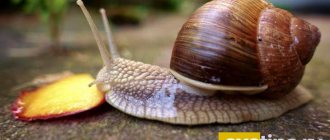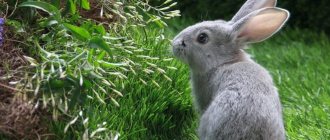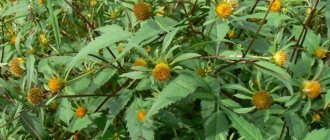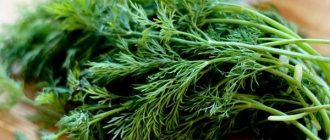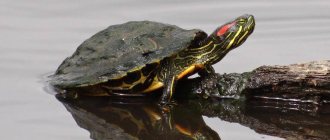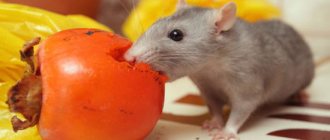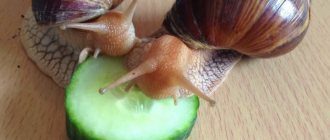Greens are the basis of a snail’s diet in nature, so when keeping it at home, you should try to ensure that greens are present in the snail’s bowl as often as possible.
Summer has come, and therefore it’s time to diversify the snail’s diet with wild, juicy herbs.
So, let’s figure out what to feed an African pet in completely non-African conditions. What grass can and cannot be given to Achatina snails?
Does a snail need exotic herbs?
If you have the opportunity to bring herbs from wild snail habitats, then why not? Tanzania, Ethiopia and some other countries are the homeland of Achatina.
In fact, many snails, and Achatina in particular, are one of the most invasive species precisely because they are undemanding when it comes to their diet.
That is why they are prohibited from being imported and kept as pets in a number of countries (the USA, for example), where the climate allows them to live well, reproduce quickly and cause significant damage to agricultural crops. In Russia, snails will not survive the winter, so this species cannot be found in the wild.
However, this does not mean that the snail is immortal and you can give it everything.
So, let's start with what is possible.
Content
Most varieties of the Achatina snail are unpretentious; they do not require special care or maintenance at home. They do not need special buildings for themselves; the snail can be kept either in an aquarium without water or in a specially purchased house. The most appropriate decor for decorating the interior space will be plants, since in addition to an attractive appearance, vegetation will help saturate the space with oxygen. Snails will also be able to feed on them, making their diet more varied.
How the owner cares for his snail and what conditions he creates will directly determine the life expectancy of the pet.
The more individuals live together, the more space there should be for each Achatina; keeping 4 individuals requires an aquarium of at least 20 liters. In this article we will consider in detail all the requirements for a habitat for Achatina.
Place to live
A snail's house should be comfortable and safe. As a habitat, you can use an aquarium left after the fish, a plexiglass or plastic terrarium, a container made of transparent plastic is also suitable, for the Achatina snail the main condition is air and space. For a medium-sized individual, a container of at least 3 liters is required. The aquarium or box must be covered with a lid, since mollusks are capable of crawling over the entire surface; it is also necessary to make several holes in it, but of such a size that the mollusk does not crawl through them
It is important to place plants such as ivy, ferns and moss inside the snail terrarium.
Priming
For the comfort of Achatina’s life, it is necessary to sprinkle soil on the bottom of her home. The substrate is very important, since they can rummage and burrow in such litter; this behavior is especially often observed in snails during the daytime. The best option is a combination of coarse sand of loose consistency with non-acidic soil. It is not advisable to use peat, since its environment is acidic. It is best to use coconut or orchid substrate, but if this is not available, then any flower substrate will be suitable for Achatina. You can add hazelnut shells and walnut cores. It is strictly forbidden to use clay and fatty loams, pieces of bark and wood as soil.
How thick the mound will be depends on the age of the snails; for young snails, soil up to 3 centimeters is needed, for adults – a maximum of 7 centimeters
The soil for the snail should always be moist, so it is important to monitor this regularly. If there is not enough moisture for the pet, then Achatina will wet it with its own mucus, as a result of which it will get dirty on the substrate and leave a mark on the surface of the container or aquarium
For Achatina snails, it is extremely important what substrate is used as bedding, since in a favorable habitat, they begin to lead a more active lifestyle and reproduce faster
Conditions
Characteristics of the main features for keeping Achatina at home:
- Temperature regime (the temperature for keeping a pet at home should vary from 20 to 28 degrees Celsius)
- Moderate humidity (with high air humidity, Achatina begins to climb up the walls, and if the air is too dry, they bury themselves in the ground).
- No direct sunlight
Achatina does not need to extend daylight hours. They should not be exposed to direct sunlight, nor should they be allowed to crawl around on an artificial light source. Otherwise, an undesirable temperature contrast will be created.
Despite the fact that mollusks need warm air temperatures in the terrarium, they should not be placed near radiators or heaters. In such conditions, the substrate will dry out, and dry air is also detrimental to the plants inside the container. In order to maintain the necessary thermal conditions in winter, the required air temperature must be ensured using heating lamps for reptiles, thus creating gentle living conditions for the cold period. Lamps should be placed outside the pet's habitat.
Bathing
The favorite game for Achatina is bathing; they love to splash in the water, so you should put a bath in the container
If individuals have a new addition to the family, it is important to ensure that the volume of water is small and such a bath does not become a danger to the young. You should bathe snails under a warm shower; to do this, you need to take Achatina in your hand and direct a weak stream of warm water over the sink.
This shower should last no more than 3 minutes. During washing procedures, the snail will stretch its body lengthwise and expose parts of its body to the stream of water.
Allowed wild herbs
Let me give you an example of the most common herbs that are easy to collect in the forest:
- Dandelion leaves
- Clover leaves
- Burdock
- nettle leaves
- Plantain leaves
Clover
Dandelion leaves
These herbs are safe. You need to collect them in the forest. And in no case near highways. I don’t recommend it in the yard either - it’s also dirty, the air is polluted with car exhaust, and people often walk their dogs on the grass - you never know what will get there along with the grass.
Naturally, nettles should not be given with stems or freshly picked. Let it sit and wash it well. Actually, the same procedure should be done with all other herbs.
Burdock - in my photo it is quite large, it is better to take young burdock leaves
Plantain
My Chamomile’s personal TOP of wild herbs is:
- Clover
- Plantain
- Dandelion
- Nettle
- Burdock
She eats burdock very sparingly, when she is hunting, she eats nettles lightly, and dandelion sparingly. The plantain is more cheerful and has only young leaves. Clover is my favorite (and hardest to collect). I deliberately do not collect any additional herbs, since these five are enough to diversify the summer diet.
I recommend collecting only young herbs. Huge stringy plantain leaves are unlikely to please snails.
General feeding rules
Aquarium snails are the best orderlies of your tank. They carry out conscientious cleaning because they feed on bacterial plaque formed on the surface of water, glass and plants. And also algae, so they will periodically empty the container from overgrown plantations.
And they themselves are full, and the aquarium is clean. Even if you forget to feed your armored pets, they will not die of hunger. But there are certain difficulties in this.
- You should not place exotic plants next to snails. There is a high probability that they will be eaten or break under their weight.
- You should not overfeed these shellfish. In this case, they will become lazy, and not only will they stop cleaning the aquarium, but they will pollute it even more with waste products.
Increased nutrition stimulates their fertility, and soon most of the aquarium space will be filled with babies - mollusks. This affects the quality of the water, and if snails live with other living creatures, then it affects it too. In particular, this can lead to a lack of oxygen and the accumulation of toxins in the water column.
Many snail breeders prefer not to feed them specifically, at all, if their pets live in an aquarium with fish. The snail will always find something to snack on. However, she will not touch the fish. She simply cannot keep up with them.
In some cases, the snail itself may become an object of persecution. Some fish nibble their whiskers, others use them as food. Such fatal neighbors for mollusks will be, for example, tetradon, cichlids, fahaka, barb and even goldfish. Therefore, when purchasing snails, check all the details of keeping their species. You may need a separate aquarium for them.
The volume of the aquarium is selected based on the following calculation: for 1 snail – 10 liters of water. This is the optimal amount that allows the snail to feel comfortable without polluting the water with the products of its vital activity.
The answer to the question of how often you need to feed aquarium snails will be ambiguous. One species requires feeding several times a day. For others, a couple of times a week will be enough. If a mollusk lives with fish, it is fed less often than solitary individuals. A portion of food should be no larger in volume than the snail itself.
An indicator that you are overfeeding a snail is a portion of food that has not been touched for several hours. Although, on the other hand, this may indicate that the animal does not perceive this food as a source of food.
Fasting is just as contraindicated for a snail as overfeeding. It will stop increasing in size, multiplying and eventually die.
Forbidden wild herbs
These include all herbs that are poisonous to humans, as well as some medicinal and aromatic herbs. There is a high probability that the snail will refuse such herbs on its own, but experiments are useless.
For example,
- sagebrush
- hogweed
- ambrosia
- flowers of wild plants
- oregano
- St. John's wort
- thyme
- yarrow
Some aromatic herbs are not poisonous and will not cause harm, but they also have little benefit. In nature, snails prefer neutral and tender juicy herbs.
The main rule is that if in doubt, give up the idea of feeding the snail with new interesting food. Believe me, the variety that can be found among the proven options is quite enough to make the snail happy, and you, as the owner, do not worry about its health and satisfaction with the food variety. By the way, in addition to herbs, there are also berries, fruits and vegetables.
Infant nutrition
If large snails are fed with pieces of vegetables, then small snails eat highly crushed food. Vegetables should be grated on a fine grater and each serving should be sprinkled with mineral supplements. The main thing is to chop thoroughly. The chalk should be like flour, the shell should be like polenta, grind the dry daphnia in a mortar.
Protein is also added without fail. Mineral and protein supplements in total should not exceed 30% of the weight of the food.
Permitted cultivated herbs (greens)
These include greens, which we ourselves often add to salads or eat just like that, as well as tops:
- leaf lettuce - frillis, oakleaf, the most common - any cultivated leaf lettuce
- dill
- parsley
- carrot and beet tops
- microgreen sprouts - for example, pea greens or mung beans
- asparagus
- spinach
If you buy microgreens for a snail, look at what herbs it is grown from. If it is mustard greens, you should not give it. Try it yourself - if the grass is bitter or has a mustard taste, you should not give it to the snail.
Dill
In addition to the above, you can include leaves of fruit trees and berries in your diet:
- raspberries
- cherries
- apple trees
- strawberries and wild strawberries
In limited quantities you can:
- celery
- cilantro
- basil
- fenugreek herb
According to my observations, my pet is indifferent to such herbs, which is why I don’t collect them. And in general, the leaves of trees are mostly dry, not juicy, which is why snails don’t like them.
Iceberg lettuce
The TOP 3 of cultivated herbs are:
- Lettuce - any options
- Microgreens
- Beet and carrot tops
She is more indifferent to other herbs and only eats when hunting.
Description
Achatina belongs to the mollusk family. Before animals were domesticated, snails lived exclusively in the tropics and subtropics of the earth. Therefore, an artificially created habitat is extremely important for its life.
The body of the mollusk is soft and tuberous, and the shell can be up to 30 cm in length. The color varies:
- black-brown;
- swamp;
- brown;
- brown with dark stripes.
In nature, there are also exotic animals called albinos, whose shell is white in color and smaller in size than that of ordinary representatives.
Achatina are hermaphrodites and very prolific; at one time the mollusk can lay from 100 to 600 eggs. Let's look at a more detailed description of the types of snails and the conditions for keeping them.
Types of Achatina
There are about 60 species of African snails. Each is unique and different from the other.
Types of Achatina snails:
Fulika
Does not require regular maintenance. Fulika eats a lot, is not picky in choosing food, loves water, but does not tolerate too high humidity. Moves slowly and monotonously. If you scare her, she hides in a shell, squeaking. She is friendly with her relatives.
Reticulata
The reticulata is mobile, loves contact, and is curious, so it always stretches its head forward. She eats everything, is well trained, so she can be taught to eat on time. He does not sleep in the first half of the day and leads an active life. Remembers and recognizes the owner.
Immaculata
It is often kept for a home terrarium. It grows slowly, so it reaches a size of no more than 15 cm.
Albopicta
It grows quickly, so at 6 months it already reaches 12 centimeters. He sleeps during the day and leads an active life at night. Friendly and sociable.
Lemon Achatina is viviparous and does not lay eggs. Active and sociable. Loves delicious food. Distinguishes the owner from others and loves to sit on the palm. Leads mainly nocturnal life, crawls, eats, makes sounds.
Brown Achatina
The body is massive. Grows quickly with quality care. Loves to swim.
Zanzibarika
They often go into hibernation. They can gnaw on the shell of another snail living nearby. They are rarely kept as a pet, as they require complex care and conditions.
"Tiger" or common Achatina.
Common Achatina are the largest representatives. Calm individuals are characterized by laziness, so they often sit in one place, leaving it only to eat.
Snail dimensions
The size of Achatina snails, regardless of the species, is approximately the same. The average size reaches 12–15 centimeters. Scientists, observing how snails grew at home, discovered that the difference in size between individuals reaches both several millimeters and tens of centimeters, while the individual factor is not excluded; there are the most active and voracious mollusks, which grow due to a certain lifestyle relatively quickly.
Living in natural conditions, Fulica reaches a larger size; such snails grow up to 20 cm, and when in a terrarium, the length of Achatina will be no more than 17 cm.
Reticulata, regardless of environmental conditions, grows up to 18 cm. Albinos grow longer, therefore they are smaller in size than their relatives and reach no more than 15 cm. Albopicta grows quickly, in comparison with other Achatina, so in six months it will look larger than any other species.
It is important to know that with poor care, mollusks grow more slowly and reach smaller sizes. By creating the ideal conditions necessary for a particular variety, you can grow Achatina of impressive size, up to 25 centimeters
How long do Achatina live?
A snail grows throughout its life. After two years, the growth rate of Achatina noticeably decreases. At one year the snail reaches puberty and is ready to have offspring. The lifespan of Achatina is usually 6–8 years. However, with good and proper care, some representatives lived for 10 years. If a mollusk lives in the wild, then the main danger that shortens its life span is other animals.
If Achatina lives at home, then the main reason for the shortening of life is cracks and chips of the shell
If this happens, then the first thing you need to do is to separate the snail from its relatives for a while, since they love to interact with each other, it is also important to treat the area of the crack and chip with a disinfectant. After taking the above measures, the mollusk can live as long as it should, regardless of the presence of damage to the shell
Prohibited cultivated herbs
As I already said, these include all those that have a pronounced peppery, garlic, mustard taste or any other strong aroma:
- watercress – has a mustard flavor
- wild garlic leaves – spicy taste
- arugula – has a mustard flavor
- rhubarb – tart taste
- Sorrel is sour and also blocks the absorption of calcium.
- green onions - spicy
- garlic leaves – contain many essential oils
- Potato tops – may be poisonous as they contain solanine
- tomato tops – very aromatic, poisonous to snails
- horseradish leaves – spicy, pungent
- Radish leaves are sometimes bitter, so it’s better not to risk it.
How to feed and in what quantities
Any herbs, especially forest herbs, should be thoroughly washed several times, rinsing the leaves well with your fingers. This is done in order to exclude the presence of parasite larvae, worms, and so on. There is no need to give leaves with holes - they were probably eaten by pests. Remove the stems too; your pet needs leaves, not flowers and stems.
You don’t have to worry about the quantity – the snail doesn’t overeat. Place the usual amount of herbs per day and remove any leftovers promptly.
In total, we find that up to twenty absolutely safe herbs can be included in a snail’s diet. This is more than enough for the snail to receive all its nutrients. Choose those herbs that the snail eats with pleasure and do not experiment with exotic ones.
By the way, all of the above permitted herbs can be dried for the snail for the winter.
Content
Keeping a pet snail is not difficult. But in order for a pet to live a long life, it needs to create favorable living conditions.
Choosing housing
When choosing a home for a snail, consider the pet’s natural habitat. Terrariums, containers, and molluscaria with a volume of 10 liters or more per individual are suitable for land snails. For aquatic shellfish, purchase an aquarium. Remember that not all aquatic mollusks can get along with aquarium fish. A 5 liter container is suitable for 1–2 aquarium snails.
Arrangement
The terrarium or aquarium should be equipped with small holes or narrow slits through which air will pass and excess moisture will evaporate. Pets can easily get out through large holes; also, a large number of holes can lead to dry air, which can be detrimental to snails. For land snails, ventilation is not at all necessary - they only need the air that enters the terrarium every day when cleaning and feeding.
To arrange suitable housing you will need:
- substrate for the bottom;
- terrarium cover;
- lids or plastic feeding bowls.
Substrate
A layer of substrate is laid out at the bottom of the molluscarium or terrarium. Coconut substrate, compost without fertilizers or peat are suitable for the substrate at the bottom of the terrarium; a small amount of sand or nut shells is allowed. Clay, wood shavings or bark are not allowed.
Lighting
A terrarium with mollusks does not need separate lighting, because the life of snails does not depend on daylight hours and lighting intensity. But observe the daily cycle of day and night. They are active at night and hide during the day.
Temperature
When keeping snails at home, temperature plays an important role; sudden temperature changes should not be allowed. Shellfish will feel comfortable at a temperature of 20–26 degrees. The specific temperature depends on the breed of the mollusk and its natural habitat. After all, the temperature regime of tropical animals and snails from central Russia will be different.
Humidity
High air humidity in the terrarium is a prerequisite for the care and maintenance of aquarium snails. Humidity is approximately 80%, fluctuations do not exceed 10%. To maintain humidity, a regular spray bottle is suitable; it is enough to spray the walls or substrate with water to increase the humidity. It is easy to monitor the humidity level using a hygrometer or by observing the level of condensation on the walls of the terrarium. You can also squeeze the soil in your fist - if water flows from it, then the humidity level is exceeded, and if it crumbles in your hands, then the humidity needs to be increased. It is highly not recommended to place a bowl of water on the ground - land snails easily turn them over, creating a swamp in the substrate, which leads to an excessive level of humidity.
Accessories
Snail breeders often decorate terrariums with moss, driftwood, and branches
It is important to treat them thoroughly before placing them in the terrarium. It is prohibited to use decorations made of stone, ceramics and other hard materials - snails often “come unstuck” from the ceiling cover and fall down, and hard objects can damage the fragile shell
Plants and snails' homes complement well. But make sure that the air humidity does not change too much due to watering. Mollusks are also not averse to eating planted plants; they especially love ferns and ivy.
